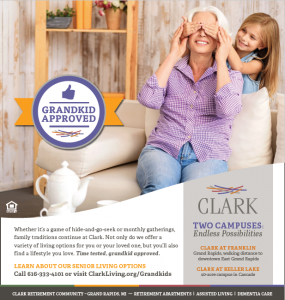The financial outlook for Baby Boomers in the coming years is a unique one. As the holders of most of the country’s disposable income, they have plenty of money to spend and aren’t shy about spending when the opportunity is right. But what’s their long-term retirement planning outlook?
In this post, we’ll look at Baby Boomers’ finances and steps professionals in the senior living industry can take to adapt to the evolving financial needs of this demographic.
Spending Power Lies with the Boomers
If there’s one thing marketers should know about the Baby Boomers, it’s that they control a whopping 70% of the country’s disposable income. Better yet, they’re in line to inherit another $15 trillion through the next decade and a half.
So while Millennials have surpassed Boomers as the most populous demographic, Boomers are still the most lucrative. Yet many businesses are marketing heavily to younger generations, potentially leaving a lot of money on the table in the process.
This is where marketers in the senior living industry are ahead of the curve. Products in this industry are designed for older consumers, so fewer resources are spent trying to appeal to all demographics. The real challenge is reaching older consumers through the channels they use to make their purchase decisions and creating content that moves them closer to a purchase.
Boomers Spend with Confidence
Once Baby Boomers make the decision to purchase, they seldom let outside noise deter them. They’re not ones to use online coupons or discount codes. In fact, only 49% of Boomers say price is “very important” when making a purchase.
One key takeaway from this information is that if you’re able to demonstrate your product’s value, Boomers will buy it with confidence and without having to be swayed with discounts and incentives (although those are always a nice touch). Your marketing and any other educational content you produce should always showcase the benefits of your product in such a way that your prospects will know it’s a worthwhile investment.
An example of this can be seen in the ad below that we created for Clark Retirement Community.
There were several benefits of life at Clark that we were able to highlight in this ad. The most important of those benefits was the numerous home and lifestyle options for seniors to choose from.
Rising Health Care Costs Present Opportunities for Lifecare
Education, housing and health care account for the three expenditures Baby Boomers spend most of their income on. Of the three, health care is expected to be the biggest annual expense for Boomers during retirement. In fact, Morgan Stanley predicts that Boomers will spend 3.4% more on health care costs than their parents did.
Rising health care costs present a significant opportunity for senior living communities, especially those offering lifecare options to residents. Long-term care costs are a concern for Baby Boomers. While we almost always recommend leading with lifestyle in your marketing, it’s important to educate and build the value of your community’s product during the sales process.
Successful marketing often appeals to a prospect’s emotional attractors to help them arrive at a logical decision.
Many Boomers are concerned — even fearful — that their finances won’t cover their care costs throughout retirement. If your community offers services that will help alleviate that fear or provide Boomers with easier access to health care, promote them as part of your sales strategy.
There’s also an opportunity for communities that don’t offer lifecare, but are instead fee-for-service. The lower entrance fee costs that fee-for-service communities offer may be appealing to younger Boomers who may not be as concerned with a community’s health care offerings as their older counterparts. In this case, you’ll be able to attract younger residents with a comparable lifestyle to CCRCs, but at a lower price point.
Declining Consumption Increases Discretionary Income, Makes City Life More Appealing
While Baby Boomers hold most of the country’s spending power, they’re spending less in some of the key consumption categories like transportation and apparel retail. This leaves more money available to spend in consumption categories related to experiences.
Referring to the latest Consumer Expenditure Survey from the Bureau of Labor Statistics, Marketing Charts provided insights on how Boomers are divvying up their yearly expenditure across consumption categories. While Boomers don’t lead in any of the categories, we’d suggest keeping your eye on entertainment and travel — areas where Boomers are expected to increase their spending.
It’s no wonder many developers are choosing to build new communities in urban areas. Seniors are moving to the city due to the convenient access they provide to entertainment and health care, and developers have taken note. CCRCs in the city provide them the opportunity to downsize, explore the attractions in the city and lock-and-leave as they see fit.
Not every community has the luxury of being in a city though. If your community is located further away from the attractions prospects are looking for, you may consider investing in experiential programs that will bring the entertainment to your community. Creating original programming that’s unique in your market and highlighting some of the “best-kept secrets” in your area are good first steps.
There’s Uncertainty Regarding Long-Term Finances
Boomers have the money now, but will they have it later? A new Provision Living Senior Communities survey found that Baby Boomers should have at least $574,000 saved for retirement, but those who took the survey reported an average of $276,000.
This lack of savings is a roadblock for seniors in their retirement planning, especially when considering that many Boomers have stated that their ideal retirement age is 64. Needless to say, many people in this cohort are behind the eight-ball when it comes to getting caught up on their savings.
The Great Recession hit Boomers especially hard, and much of this cohort has struggled to make up for the losses in their remaining working years. So, while $276,000 or so in savings is nothing to sneeze at, it’s not enough to cover the entrance fee at most traditional senior living communities, nor years of subsequent monthly fees.
Ten thousand Boomers are expected to reach age 65 every day for the next 19 years and only 55% of them say they have “some” retirement savings. A growing number of people will be looking to senior living developers to provide adequate housing options.
There’s an opportunity here for senior living developers to cater to the underserved middle market. This middle market has been defined as older adults with annual household incomes between $36,000 and $107,000 according to LeadingAge’s Addressing the Gap in Senior Housing Today whitepaper.
Get More Insights with eNews
Sign up for eNews to keep up with the latest mature marketing insights, as well as the latest trends in the 55+ and senior living industries.






